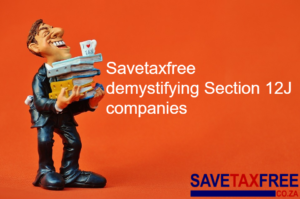The best and worst reasons for drawing from your TFSA
Related Articles
Life happens to the best of us, and when it does, it usually requires a not so small chunk of cash you probably weren’t prepared to shell out to put things back on track.
Your car’s brakes suddenly start screeching and your maintenance plan has just expired. That’s life. Your pet parrot falls ill and you suddenly remember that pet insurance you’ve been putting off for months. That’s life. Or common sense simply flew out the window when, shortly after payday, your eyes caught glimpse of some wicked (and wickedly overpriced) fashion item you just had to have. That’s life.
Now, one week before your next payday you’re strapped for cash … as in, you’ll be eating noodles for the next seven days, but even that won’t solve your car’s braking problem. You need money and you need it yesterday.
 When blindsided by unexpected financial hurdles, the first thought that often comes to mind is to raid your savings or investments, for those fortunate enough to have any. For the rest, the prospects are even gloomier as they’re often left with no option other than resorting to debt.
When blindsided by unexpected financial hurdles, the first thought that often comes to mind is to raid your savings or investments, for those fortunate enough to have any. For the rest, the prospects are even gloomier as they’re often left with no option other than resorting to debt.
Most of us know that we should be saving for those rainy days, but with 78% of the respondents in the Gauteng City-Region Observatory Quality of Life Survey claiming they found saving money to be “difficult to impossible”, saving and investing is clearly a luxury for the majority of South Africans.
For those who can, the temptation to dip into savings, especially in products that are easily accessible such as TFSAs, can be overwhelming.
While industry experts are at pains to get consumers to understand that TFSAs are ideal long-term savings vehicles, the ease of access makes raiding them during hard times all too tempting. Doing so negates the benefits of investing over the long term.
There seems to be some concern in the industry that the lack of experience with TFSAs could lead people to make bad decisions. So when should you withdraw from your TFSA, and when is it a really bad idea to do so? We spoke to the firm that brought you 2016’s best TFSA to find out.
Tristan Finnemore, head of sales at EasyEquities, says while the short-term benefits of a TFSA may seem insignificant, the long-term benefits are a different story all together.
“That’s why it’s important to keep your money invested in a TFSA and resist the urge to withdraw it. Those tax savings, compounded over time, can substantially enhance your return profile over the life of your investment. The longer you remain invested the more benefit you will get.”
While you can withdraw the money at any time, Finnemore warns that once you’ve done so you cannot replace what you’ve taken – it reduces your overall lifetime contribution limit.
He also stressed however, how saving through a money market TFSA account could result in ‘missed opportunity’ as generally, these had a far lower return set over index tracking ETF’s and actively managed portfolios, which made a significant difference when looking at a 16 year or longer investment period
Should you really need to withdraw money, however, Finnemore believes the best strategy would be to do so as close to the end of the tax year as possible, then reinvest the following tax year to allow the capital time the time to grow.
Below we list some valid reasons to withdraw from your TFSA:
- To get rid of debt. If the interest on your debt is higher than the returns you’re getting from your investment, it makes sense to squash the debt first.
- For a medical emergency. Your savings will be of no use to you if you’re dead.
- For emergency vehicle repairs. Given the state that our public transport is in, sometimes a vehicle is more than a luxury.
- For emergency home repairs. Think burst geyser. Need I say more?
- For education, which is still a great investment no matter which way you look at it.
- If you’ve recently lost your job. Bills don’t stop when you stop working.
- For a big purchase, such as a deposit on a new house.
- To start a business.
And the worst reasons to tap into your TFSA?
- That overpriced pair of Steve Madden shoes (it’s tough, I know).
- To fund day-to-day expenses. If you have to use your savings to buy groceries or petrol it means you’re no longer living within your means.
- To buy fancy gadgets such as the latest ultra HD television. This is getting desire mixed up with need.
- To give a loan to family and friends, unless you’re really sure you’re getting it back, which in most cases you won’t, and even when you do it won’t have accumulated any interest during that time.






